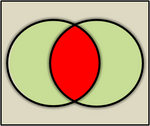Difference between revisions of "PicoPV Test"
***** (***** | *****) m (moved Pico PV test to PicoPV Test) |
***** (***** | *****) m |
||
| Line 1: | Line 1: | ||
| + | {{Redundancy|[[PicoPV Field Tests]], [[PicoPV Field Tests of GTZ EnDev]], [[PicoPV Test]] and [[Solar Laterns Test]].|All four articles deal with PicoPV testing. Summarizing, re-organizing and merging of these articles might be needed. Maybe a main article about PicoPV Testing should be written (e.g. [[PicoPV Test]]) which links to more specific articles (e.g. [[PicoPV Field Tests of GTZ EnDev]]).}} | ||
| + | |||
= PicoPV Systems<br/> = | = PicoPV Systems<br/> = | ||
Revision as of 10:29, 9 July 2012
 |
This article is suspected to be in whole or in parts redundant with with other articles (PicoPV Field Tests, PicoPV Field Tests of GTZ EnDev, PicoPV Test and Solar Laterns Test.). Please check these articles and rewrite them accordingly. Only remove the maintenance box from this and the other articles, after a thorough revision of the above mentioned articles. See the discussion page for more details or start a discussion there. In particular the mentioned articles are redundant on the following points: |
PicoPV Systems
Currently engagement concerning PicoPV Systems increases. In order to advance the framework for project development in this field EnDev has effected various activities. One of these is a test series for PicoPV Systems.
It is divided into three phases:
- Technical Test I
- Technical Test II
- Field Tests
Technical Test I
The technical tests are performed by Fraunhofer Gesellschaft (FhG/ISE) in Freiburg, Germany. In the first test phase (2007/ 10 - 2008/ 01) twelve systems were tested on road capability with special focus on mechanical stability, lighting characteristics and operability.
These systems were in detail:
- GL9000SW, Global Marketing Technologies Inc. (US) --> overall picture bad
- MS01, Macro-Solar Technology Co,. Ltd (China) --> overall picture very bad
- Solar 2007-1, Solarprojekt-Freilassing e.v. (Germany) --> overall picture good
- Mightylight, Cosmos Ignite Innovations (India) --> overall picture good
- AISHWARYA, Noble energy Solar Technologies Ltd. (?) --> overall picture middle
- Solar Home System, "Afghanistan" --> overall picture very bad
- 2212SL Wuara, SolEnergy Africa (PTY) Ltd (South Africa) --> overall picture very bad
- SOLUX-LED-100, SOLUX e.v. (Germany) --> overall picture middle
- Sun x-set mobile, Würth Solergy (Germany) --> overall picture middle - bad
- Glowstar GS7, Sollatek Ltd. (UK) --> overall picture middle
- AS018, Astral Solar technology Co. (China) --> overall picture bad
- SOLUX-LED-50, SOLUX e.v. (Germany) --> overall picture middle
Detailed test description can be inspected here:
- Technical Test I (in german)
Technical Test II
Seven solar lanterns reached the second testing stage, of which four are German-made: the Solux LED 100 and Solux LED 50 of the Solux e.V. development assistance project, the Solar 2007-1 by the Freilassing solar promotion project, and the sun x-set mobile produced by Würth. Other lamps of the main test were the Glowstar GS7 of the British company Sollatek, the Aishwarya NEST-6543 of the Indian manufacturer Noble Energy and the Mightylight 3040, also Indian made.
In the following table you find a selection of the most important criteria:
Testcriteria Level 2
|
Solar module |
Does the system deliver the nominal rated values of power output, open- circuit voltage and shortcircuit current? |
| Battery |
Measure of capacity (NiMH+ Pb), persistence against overcharging (NiMH), simple durability test (NiMH) |
|
Luminous fux |
average of 210 minutes |
|
Brennzeit/autonome Zeit |
The duration is measured until luminous flux falls to 70 % of the initial value. (beginning from a fully-charged battery) |
| Luminous efficacy |
average is obtained from a period of 210 minutes, beginning from a fully-charged battery. |
| Charge Controller |
Spannungslevel Ladeschluss-/ Lastabwurfspannung, Eigenverbrauch, Signalisierungen, Schutz vor Entladung durch Modul, Wirkungsgrad |
| Ballast device |
How good is the efficiency of the ballast? |
|
Cycle test / degradation of CFL-lamps |
How long do CFL lamps last when subjected to a switching cycle of ‘on’ for 60 seconds, ‘off’ for 150 seconds? |
|
Simulation |
Ermittlung der solaren Deckungsrate für 5 Standorte bei einer Brenndauer von täglich 3,5 Stunden |
Field Test
The publication is available in English and German:
Further Information
- The SOLAR 2007-1 Lantern (Solarprojekt Freilassing e.V.)has been upgraded with new LEDs of 80 lm/W.



















